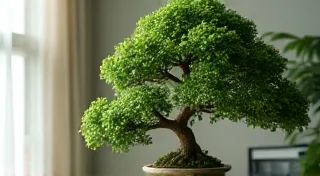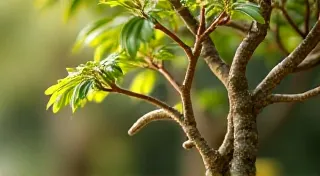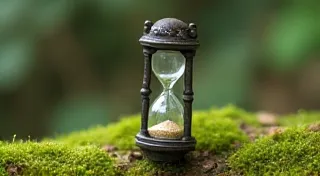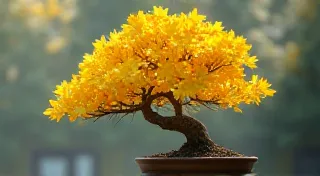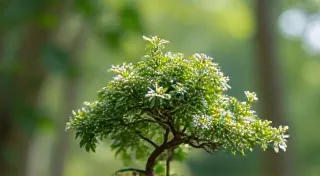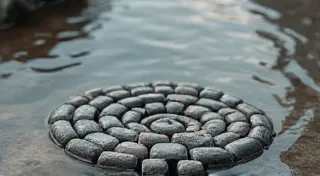Larch Bonsai: Seasonal Beauty and Care Considerations
The Larch (Larix species) offers a unique and captivating experience for bonsai enthusiasts. Unlike most evergreens, Larch trees are deciduous, meaning they lose their needles annually, transforming into a stunning display of autumnal colors before returning with fresh growth in the spring. This guide explores the intricacies of Larch bonsai care, highlighting the special considerations required throughout the year. For those fascinated by the unseen world beneath the soil that supports these beautiful trees, exploring the silent dialogue: root systems and the unseen architecture can provide valuable insight into overall health and vitality.
Understanding the Larch's Deciduous Nature
The deciduous nature of the Larch is arguably its most defining characteristic. This means your Larch bonsai will completely lose its needles in the fall, typically showcasing vibrant yellows, oranges, and reds. Don't be alarmed! This is a natural process. The tree is entering a period of dormancy to conserve energy for the upcoming spring. Understanding this cyclical nature is key to successful care. Many deciduous bonsai, like the fascinating Ginkgo bonsai, share this trait, requiring similar seasonal adjustments in care.

Seasonal Care Guide
Caring for a Larch bonsai requires adjustments throughout the year. Here’s a breakdown:
Spring (March - May) – Rebirth and Growth
- Repotting: Early spring, just as new buds appear, is an ideal time to repot your Larch bonsai. Use a well-draining bonsai soil mix. Be gentle with the roots. The root health of a Larch, like any bonsai, is crucial and connecting with the silent dialogue: root systems and the unseen architecture can help foster a deeper understanding of their needs.
- Watering: Increase watering frequency as the tree actively grows. The soil should dry slightly between waterings.
- Fertilizing: Begin fertilizing with a balanced bonsai fertilizer, following the product instructions.
- Pruning: Early pruning can help shape the tree and encourage branching. Consider the overall design and potential for future growth as you prune.
Summer (June - August) – Vigorous Growth
The summer months present a period of intense growth for your Larch bonsai. Careful attention to detail during this time will directly impact its health and appearance throughout the year.
- Watering: Consistent watering is crucial during the summer months, especially in hot and dry conditions. Overwatering can be just as detrimental as underwatering.
- Fertilizing: Continue fertilizing as needed. Monitor the tree for signs of nutrient deficiencies.
- Pest and Disease Control: Monitor for common bonsai pests like aphids and spider mites. Treat promptly if detected. Common bonsai problems often have simple solutions, though sometimes, a more experienced hand is required.
- Sunlight: Provide ample sunlight, but protect from the harshest afternoon sun. A shaded area during peak hours can prevent scorching.

Autumn (September - November) – Preparing for Dormancy
As temperatures cool and days shorten, your Larch bonsai begins its transition into dormancy. The vibrant display of autumn colors is a beautiful spectacle, but it’s also a signal to adjust your care routine.
- Watering: Gradually reduce watering as temperatures cool and growth slows. This helps the tree prepare for the colder months.
- Fertilizing: Cease fertilizing in late autumn to allow the tree to harden off for winter. This prevents excessive growth before dormancy.
- Leaf Drop: Enjoy the spectacular autumn colors! Allow the leaves to fall naturally. Resist the urge to prune during leaf drop, as the tree is conserving energy.
- Preparation for Winter Protection: Begin to consider your winter protection strategy, choosing a location or method that will provide adequate protection from harsh conditions.
Winter (December - February) – Dormancy and Protection
Winter presents a unique set of challenges for Larch bonsai. Minimizing stress during this period is essential for long-term health. Proper winter care isn't just about avoiding freezing; it's about maintaining a healthy balance.
- Watering: Water sparingly, only when the soil is dry to the touch. Overwatering is a common cause of root rot during dormancy. The soil should be practically bone dry before watering again.
- Temperature: Protect the bonsai from harsh winter conditions. A cold, sheltered location is best, but avoid freezing temperatures. Some species can tolerate colder conditions than others, so research your specific Larch variety. Understanding the specific needs of your chosen variety is crucial; for example, Serissa Foetida, while not a Larch, often faces similar challenges and the insights from Serissa Foetida bonsai: Troubleshooting Common Problems can be broadly applicable.
- Wind Protection: Strong winds can desiccate the branches and needles, even during dormancy. A windbreak is highly recommended.
- Snow Load: If snowfall is expected, ensure branches are not weighed down excessively. Gently remove excess snow.
Species Considerations
Several Larch species are suitable for bonsai, each with slightly different characteristics. Selecting the right species is the first step towards a successful bonsai journey.
- Japanese Larch (): Popular for its vibrant autumn colors and strong branching. It's generally considered to be among the more forgiving species for beginners.
- European Larch (): Tolerant of colder climates. Often displays beautiful, slightly curled foliage.
- Siberian Larch (): Known for its pyramidal shape and robust growth habit. Requires more space to develop.
- American Larch (): A hardy species often overlooked in bonsai, offering unique characteristics.
- Chinese Larch (): Known for its rapid growth and distinctive needles.

Advanced Techniques and Considerations
Beyond the basic care guide, there are several advanced techniques that experienced bonsai enthusiasts may employ to enhance the health and aesthetic appeal of their Larch bonsai. These include:
- Jin and Shari Creation: Mimicking the effects of age and weathering through the creation of jin (deadwood branches) and shari (exposed trunk).
- Grafting: Combining desirable traits from different Larch varieties.
- Yamadori: Collecting wild Larch specimens, a challenging but rewarding practice.
- Wiring and Shaping: Utilizing wire to manipulate branch positioning and create desired forms. This requires patience and a good understanding of tree physiology.
Conclusion
Cultivating a Larch bonsai is a rewarding experience, offering a dynamic display of seasonal beauty. Understanding its deciduous nature and adjusting your care routine accordingly will ensure a healthy and thriving bonsai for years to come. Remember to research the specific needs of your chosen Larch species for optimal results. The beauty of bonsai extends beyond aesthetics; it's a journey of learning and connection with nature, fostering patience, observation, and a deeper appreciation for the intricate processes of life. The spirit of resilience and adaptability embodied by the Larch makes it a truly exceptional subject for bonsai artistry.
For those inspired by the dwarfing artistry applied to other conifers, consider the majesty of the Dwarf Ponderosa Pine Bonsai, a testament to the power of miniaturization.
